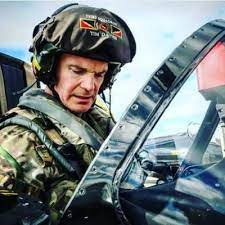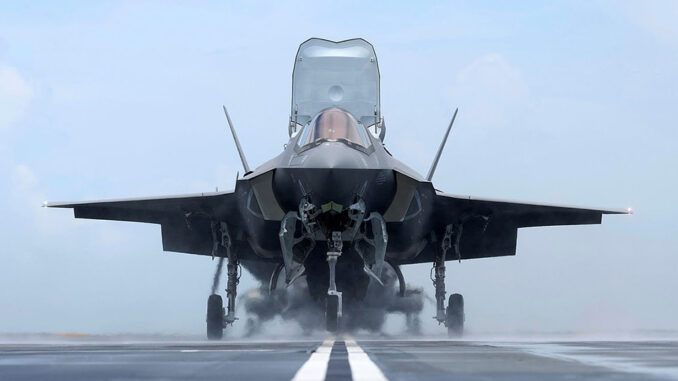Former RAF Senior Instructor reveals how the RAF training system was wrecked by privatisation (and how pennies could have saved a $100 million F-35B)
Hush-Kit met former RAF Tornado pilot and Senior Instructor, Tim Davies, to find out more about the dire situation the Royal Air Force finds itself in, and how it could be best rectified. Davies claims he risked, and lost, his previous civilian post as he had spoken out. Now he shares his views on what went so wrong with UK military training.
What is wrong with the training system?

In around 2006, the existing UK military flying training system that was run by the RAF was thought to be at risk of being unable to deliver the required quantity and quality of aircrew to meet entry requirements to the Operational Conversion Units and onto the frontline. This was due to dated aircraft and differing and multiple contractual arrangements for the provision of equipment and support. This led to the UK Treasury deciding that, to make the costs of UK military flying training more predictable, it would privatise it out and therefore be able to pay the same amount of money each year over a 25-year period. Figures changed a lot in the early days but it worked out at a total cost of about £6.25bn or £250m a year. The bid was won by Lockheed Martin and Babcock who created a company called Ascent Flight Training to run what was now called the UK Military Flying Training System or UKMFTS.
This partnership was known as a PFI (Private Finance Initiative) which was popular in the UK at the time. The RAF was known the world over for its superb and enviable flying training system and overnight, it had been privatised and was to be run by civilians.
The flying training system prior to UKMFTS wasn’t very pretty but the pilots and students made it work, it belonged to the UK military and there was an element of pride about it. I was an instructor both prior to and after the introduction of UKMFTS but I only look back at the older military-run system with any sense of pride and fond memories. UKMFTS was, to me, soulless with its new buildings and new aircraft; this should be a good thing, I know, but Squadrons before were just more authentic – hard to describe, but they had memorabilia on the walls that gave them a sense of history and past achievements and these were lost under UKMFTS.
The old flying system was also incredibly flexible as it was purely military-run – UKMFTS is lean, as you’d expect, there is no flex, few military pilots yearn to instruct in it and it has become a 9 to 5 job. Also, critically, there were initial contract issues where the provider, Ascent Flight Training expected the RAF to deliver instructors to them who were already trained to instruct but the Ministry Of Defence expected Ascent to train the instructors – this was never resolved and done on local agreements throughout the separate flight schools. This was a huge problem for me as OC Standards on the Hawk T2 at RAF Valley and I managed to shut the school down for 6 months in 2014 just so I could get my instructors trained as Ascent was prioritising student training over instructor training. This was understandable as they were financially incentivised to output students and there was no money for them to train instructors – you can see the problem here but without instructors, you don’t get students!
The flying training system will always be in trouble as I see it, precisely because it was privatised. Instructors are all still military on jets but all the other aircraft they can be civilian, too – I don’t see this as a big issue but the system being run by an external company was always a problem. Over the years, the military personnel on the bases actually got on really well with the Ascent employees they served with – they are all good people but the problems that existed centrally and at the top with Ascent HQ and the issues with the MOD too, always would filter down and cause friction.
Also, aircraft that were bought all had issues of some sort – I was the Requirements Manager who brought them all in but they were purchased before I got there. The Airbus helicopters had issues where the rear crew loadmaster struggled to operate safely, the Texan T6 wasn’t designed to be parked on a beach at RAF Valley and wasn’t allowed to fly over water because the wrong ejection seat harness had been fitted (MOD issue not Beechcraft – a lovely company), Hawk T2 (which is the only non-UKMFTS asset and belongs to the MOD) has the same issue as the Australian Hawks had with compressor blade cracking which I expect is coming to a T-45 Goshawk near you, soon) – it also has a huge and laborious minor modification programme to get through. Grob 120TP seems to be doing OK but its simulator was actually a procedural trainer and so a lot of training that was expected to be done in it couldn’t be done. In 2018, two of the five Embraer Phenom aircraft for multi-engined training, collided during a practice flypast session for the RAF’s 100th-anniversary flypast over London – I’m not sure they got all five flying again.
Also, the frontline changes in squadron numbers meant that student input figures had to be changed and the system couldn’t cope with the required flex – that’s a lean system for you. Apart from all of that, UKMFTS is great!
Why are there so few F-35 pilots?

The aircraft were delivered ahead of trained pilots, this makes some sense although pilots were being trained stateside ahead of the arrival. Many pilots just don’t fly that much and so leave for other jobs – the admin burden for an RAF or RN pilot on F-35 is high and they have mandatory courses to do (Inappropriate Behaviour Course, DIE etc which annoys them no end) and they spend a long time away from family. Also, the jets are based at RAF Marham in Norfolk – it’s remote as are all jet bases in the RAF and RN – pilots get bored of it eventually. There is a blockage in the Fast Jet Flying Training pipeline at the moment on Hawk T2 as previously mentioned which is also really not helping.
How should it be rectified?
Personally, I don’t think it can be when you have both flying training AND frontline issues together as they both feed into each other – the training system provides new pilots to the frontline and the frontline provides instructors back into flying training. At the moment they aren’t providing anything to anyone and this is the issue.
The current time for a fast jet student to reach the frontline is 8 years – why would you ever join to do that now?
How is it fixed, listen to me and my team back in 2014, I’d say.
Did the ‘capability holiday’ after the Harrier damage the FAA’s ability to use fast jets today?
The RN pilots are great people and I trained loads of them which I enjoyed as I was originally in Royal Navy myself. The RN was sensible and, when it lost the Sea Harrier FA2, it put pilots onto the RAF’s GR7 and GR9. It also prepped for the F-35 introduction by sending pilots onto USN F/A-18s – the RN was very good at doing this so, for them, there was no capability holiday.
What are your thoughts on the F-35B engine blank crash?

We are just learning the lessons from the past again. When I taught on the Hawk T1 which was introduced in 1974, the engine blanks were tied together with a bit of old rope so you couldn’t have left one in – if one was out, the other came out with it. The F-35’s engine blanks are further down the engine and harder to see, but that’s why they needed to build in something to prevent this and a simple piece of rope costing a few pence could have saved a $100m loss. The young pilot got out at least, legend!
What should I have asked you?
What lessons can I still bring to aviation?
Thanks for asking, lol.
I run a virtual flight school based on the RAF’s flying training syllabus that I taught on for a decade and I use the game Digital Combat Sim to do this, but it is more than a flight school as my students will tell you. Intense work for a couple of hours a week, whilst I teach you complicated flight profiles, changes the way people operate and lives improve and so do relationships. I see it as therapy but in a very manageable way. I run it on a subscription model and I’ve just introduced voluntary exercise and nutrition work and advice. I have all sorts in there from airline pilots, military students, doctors, retired police officers, builders – you name it, they are there and all with an interest in aviation – I’m just making it to be the school I would have wanted to learn in.
Tim Davies
For 20 years I flew in the Royal Navy and Royal Air Force on the Tornado GR4, spending the last decade as the Senior Instructor teaching Advanced Flying Training and Tactical Weapons on the Hawk T1 and T2.
My company, Fast Jet Performance is an aviation-based consulting company also specialising in risk and gamification.
I run a virtual flight school called Shadowlands Online Flying Training where I take people through 9 months of instruction using Digital Combat Sim and I run a YouTube channel and podcast also called Fast Jet Performance.
The author’s views do not necessarily reflect those of the site
Order The Hush-Kit Book of Warplanes here

My heart sinks when I read this, it’s enough to reduce a grown man to tears if those tears beat the rising anger in the chest. I served just short of 40 years in the RAF, without a ground tour, my last 21 years flying fighter types both operationally and as a Squadron, refresher, basic and advanced jet QFI (retiring in 2005). I have enormous pride in having served and being helped along the way by exceptionally fine people. However, how can one forgive the senior political folk who have, by apparent ignorance or ‘career enhancing’ decisions, fixing a training system that ‘wasn’t broke’. The RAF had the most envied training system – having served with two different air forces I know this – but now?. A “9 to 5” military system?! If we don’t own it we are doomed.
I totally agree with the comments in this article ex RAF Aerosystems Engineering Officer